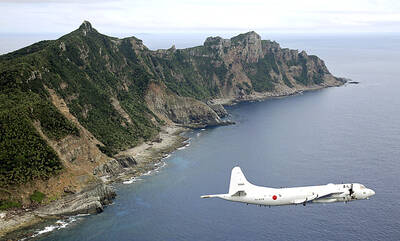Taiwan has the highest prevalence of retinal detachment in the world, with 16.4 cases per 100,000 people, according to Kaohsiung Chang Gung Memorial Hospital research commissioned by the Ministry of Health and Welfare.
The prevalence rate of retinal detachment in Taiwanese aged 20 to 29 is 18.7 cases per 100,000 people — 13 times the rate in the same age group in the Netherlands, the research showed.
The nation’s high retinal detachment rate is associated with the large number of people with high myopia (nearsightedness), Kaoshiung Chang Gung Memorial Hospital ophthalmologist Wu Pei-chang (吳佩昌) said, citing National Health Insurance Administration’s statistical data and public health research on the nation’s eye clinics.
Although the prevalence of myopia is increasing in many nations, its prevalence in Taiwan is higher than in most nations, he said.
The WHO recently modified the definition of high myopia from myopia exceeding 600 degrees to 500 degrees, Wu said, adding that people with high myopia have a 10 percent risk of developing retinal detachment.
According to data from the Ministry of the Interior, the population of Taiwanese aged 18 to 65 is about 16.2 million, and estimating that 90 percent of them have myopia, of whom 25 percent have high myopia, about 365,000 people might be at risk of developing retinal detachment or even losing their eyesight, he said.
Retinal detachment is more serious than macular degeneration, floaters, cataract or glaucoma, Wu said, adding that the risk of retinal detachment in people with myopia exceeding 300 degrees is about 10 times the risk in people without myopia.
Retinal detachment can only be treated by surgery, but the recovery rate is only about 60 to 90 percent, he said.
Myopia is caused by increased axial eye length, which can lead to retinal degeneration, damage or retinal lesions, mostly by high myopia, Tri-Service General Hospital’s Ophthalmology Department Director Lu Da-wen (呂大文) said.
The number of young patients with cataract has increased over the past few years, and is likely caused by smartphone use or playing video games for long hours without resting, causing eye fatigue, he said.
Ministry of Education statistics show that the myopia rate among elementary-school students above fourth grade has remained at nearly 50 percent and at more than 70 percent among junior-high school students over the past five years.
Children below the age of eight have about 20/20 vision, but overstraining the eyes can cause myopia, Wu said.
It is important for children and adolescents to learn how to protect their eyes, as the high myopia rate in senior-high school students is nearly 20 percent, Wu said.
This story has been corrected since it was first published.

MISINFORMATION: The generated content tends to adopt China’s official stance, such as ‘Taiwan is currently governed by the Chinese central government,’ the NSB said Five China-developed artificial intelligence (AI) language models exhibit cybersecurity risks and content biases, an inspection conducted by the National Security Bureau (NSB) showed. The five AI tools are: DeepSeek, Doubao (豆包), Yiyan (文心一言), Tongyi (通義千問) and Yuanbao (騰訊元寶), the bureau said, advising people to remain vigilant to protect personal data privacy and corporate business secrets. The NSB said it, in accordance with the National Intelligence Services Act (國家情報工作法), has reviewed international cybersecurity reports and intelligence, and coordinated with the Ministry of Justice Investigation Bureau and the National Police Agency’s Criminal Investigation Bureau to conduct an inspection of China-made AI language

LIMITS: While China increases military pressure on Taiwan and expands its use of cognitive warfare, it is unwilling to target tech supply chains, the report said US and Taiwan military officials have warned that the Chinese People’s Liberation Army (PLA) could implement a blockade within “a matter of hours” and need only “minimal conversion time” prior to an attack on Taiwan, a report released on Tuesday by the US Senate’s China Economic and Security Review Commission said. “While there is no indication that China is planning an imminent attack, the United States and its allies and partners can no longer assume that a Taiwan contingency is a distant possibility for which they would have ample time to prepare,” it said. The commission made the comments in its annual

‘TROUBLEMAKER’: Most countries believe that it is China — rather than Taiwan — that is undermining regional peace and stability with its coercive tactics, the president said China should restrain itself and refrain from being a troublemaker that sabotages peace and stability in the Indo-Pacific region, President William Lai (賴清德) said yesterday. Lai made the remarks after China Coast Guard vessels sailed into disputed waters off the Senkaku Islands — known as the Diaoyutai Islands (釣魚台) in Taiwan — following a remark Japanese Prime Minister Sanae Takaichi made regarding Taiwan. Takaichi during a parliamentary session on Nov. 7 said that a “Taiwan contingency” involving a Chinese naval blockade could qualify as a “survival-threatening situation” for Japan, and trigger Tokyo’s deployment of its military for defense. Asked about the escalating tensions

DISPUTE: A Chinese official prompted a formal protest from Tokyo by saying that ‘the dirty head that sticks itself out must be cut off,’ after Takaichi’s Taiwan remarks Four armed China Coast Guard vessels yesterday morning sailed through disputed waters controlled by Japan, amid a diplomatic spat following Japanese Prime Minister Sanae Takaichi’s comments on Taiwan. The four ships sailed around the Senkaku Islands — known as the Diaoyutai Islands (釣魚台) to Taiwan, and which Taiwan and China also claim — on Saturday before entering Japanese waters yesterday and left, the Japan Coast Guard said. The China Coast Guard said in a statement that it carried out a “rights enforcement patrol” through the waters and that it was a lawful operation. As of the end of last month,